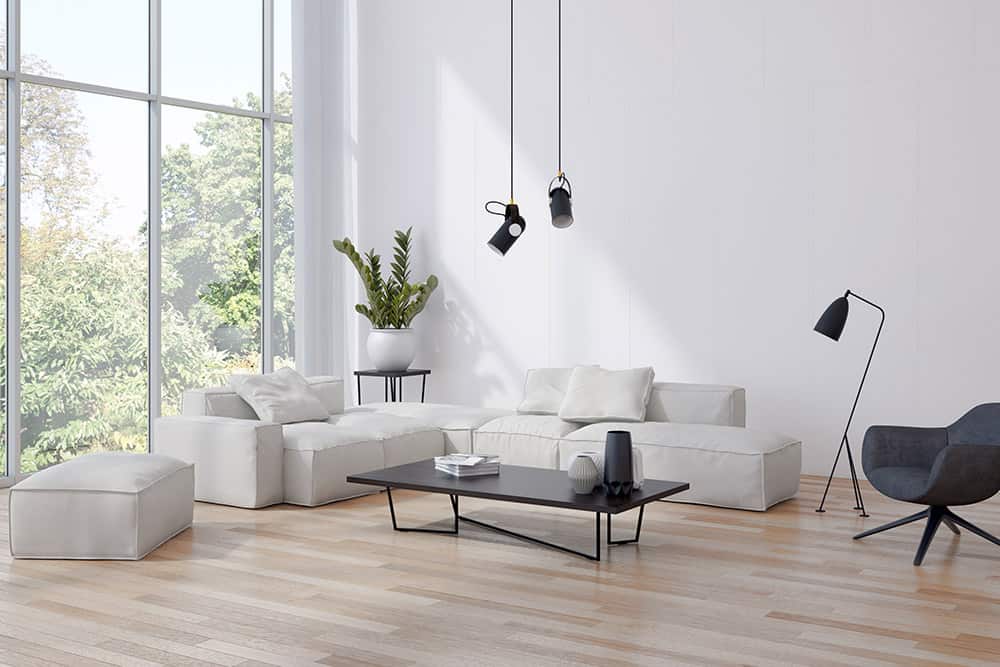“The sun is your harshest critic” – the words every young plasterer has drilled into them by experienced colleagues and mentors. Whilst this statement is very true, it is not only the sunlight that exposes even the smallest imperfections on hand-finished surfaces.
Sidelight plays a huge role in this, its effects further exacerbated by the use of glossy paints. For the interior, modern design and construction methods encourage large windows with fewer beams, pelmets and columns. This means light enters the building almost parallel to the wall and ceiling surfaces, increasing the paint’s illumination.
Significant changes have occurred amongst external surfaces, too. The increasing popularity of rendered finishes has made inroads into the dominance of face brick, in some areas almost completely replacing it. Moreover, greater awareness of energy efficiency has encouraged the use of lightweight insulation systems, which also include a rendered finish. All of this increases the vitality of understanding light reflectance value and what it means for your building’s next coat of paint.
Light Reflectance Value – Why Is It Important?
A colour’s light reflectance value (LRV) indicates the amount of usable and visible light that reflects from or absorbs into a painted surface. Measured on a scale of 0-100, the value acts as a guide to building and design experts from architects and engineers to interior designers and colour consultants to predict how dark or light a colour will appear.
Understanding LRV is critical for choosing the correct paint shade for your environment, especially when dealing with whites. Light reflectance value informs many areas, from the amount, positioning and type of lighting fixtures that need to be accounted for when lighting interior spaces to insulation – very dark surfaces with LRVs close to 0 can get very hot, whereas values nearer 100 keep buildings light and cool. Choosing the right paint can even increase your energy efficiency, as higher LRV paints won’t require as much lighting or air conditioning.
What do the Numbers Mean?
An LRV rating of 0 represents absolute black absorbing all light and heat, whereas a value of 100 would denote pure white, reflecting all light. Essentially, the higher the LRV, the lighter the particular paint colour will appear Likewise, the lower the LRV, the darker the paint colour will appear. All colours sit between these two extremes.
A low LRV is generally considered anywhere between 0-40, medium 40-60 and higher 60 and above. Though the values themselves are important, consideration must be given to the amount of light that hits the surface and what fixed elements influence the amount of shade. Mid to dark colours may not be suitable for some exterior substrates and cause damage including warping.
LRV consideration is extremely relevant when choosing a colour for your Light Weight Wall Systems.
Lightweight Wall Systems, including FC Blueboard, are prone to thermal expansion which can cause wall cracking. For these substrates, a colour with an LRV rating of over 40 is required.
Tips
From setting the mood to ensuring facilities are suitable for everyone (those with vision impairments require paint with higher light reflectance values) many considerations go into choosing the right paint for your project.
The most important thing is to know your requirements and test thoroughly before committing. Contact us and one of our Baxta experts will guide you through the right paint systems and LRV for your next project.



